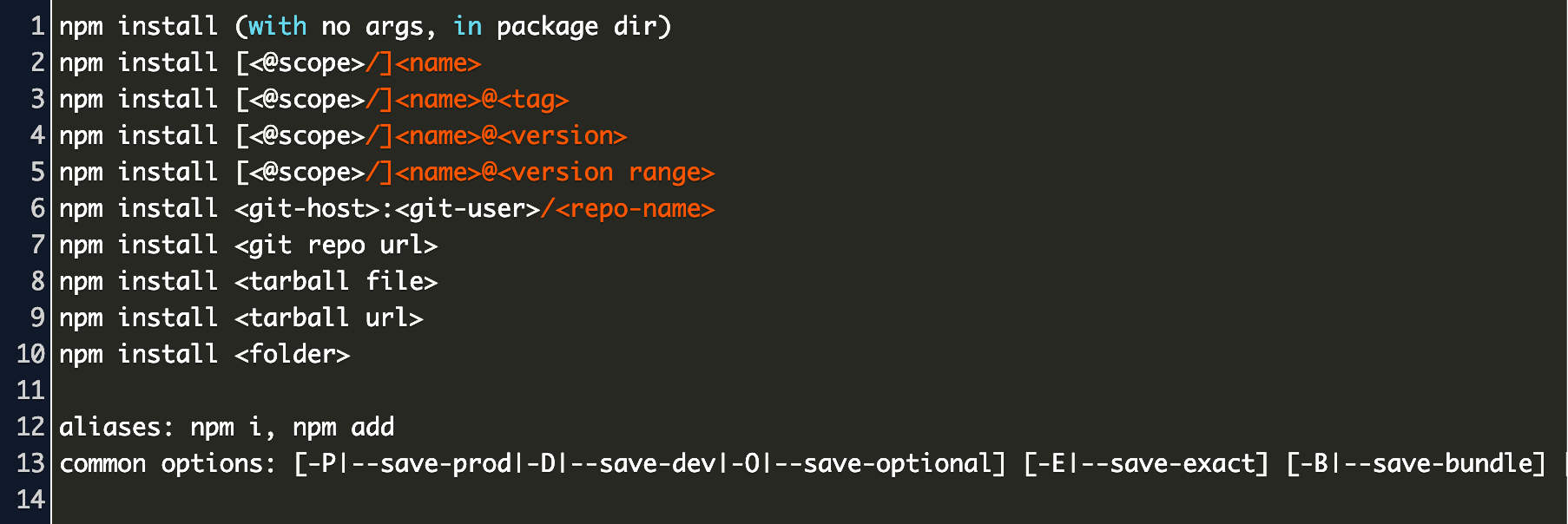

There are several ways you can install Node.js. Three approaches to installing Node.js and npm

#Npm install from github binary download#
Follow the instructions in the Git documentation to download Git for your platform. You need to install the Git client for your platform. This video walks you through the steps in this Node.js tutorial:
#Npm install from github binary how to#
After showing you how to install Node.js, I walk you through installing the editor, VS Code, and where you can write your source code for this learning path. This tutorial shows you 3 different ways to install the Node.js runtime and the Node.js package manager, npm: from the Node.js download page, via Homebrew (for MacOS installation), and through the Node.js Version Manager. Not running npm scripts as the root user is a security measurement imposed by npm to make sure that potentially harmful npm packages cannot simply gain root access to your system.Updated Novem| Published October 10, 2018 During the publish procedure, the prepare / postinstall steps will be run and once someone installs the package from the registry, those steps do not need to be run anymore as the published version already contains the built result. If you are confident about putting your package out there, publishing it to the npm registry is a simple solution to the problem. Now that we know about the permission problem, what can we do to fix it or workaround it. The working directory (in our example above: /root/.npm/_cacache/tmp/git-clone-c0ff03b8) resides under the root user’s folder (because the default user within the docker image is root) but npm changes to user nobody prior to running the prepare scripts and since nobody does not have access to root’s files, we get the above warning.

The problem becomes apparent when inspecting the path of the working directory in which the prepare steps cannot be run. This seemingly “silly” warning informing you that the prepare step cannot be un in the wd (working directory) means you app will not work as the mandatory postinstall / prepare scripts will not have been successfully run. Npm sill prepareGitDep npm WARN lifecycle ~prepare: cannot run in wd (wd=/root/.npm/_cacache/tmp/git-clone-c0ff03b8) If you carefully check these verbose logs, you’ll find a line during the installation process stating: npm verb prepareGitDep undefined: installing devDeps and running prepare script. If in the past you already had issues with npm, you might know about the command line argument to change the loglevel but in case you have not, adding -ddd to your command outputs a ton of additional information. This works fine as long as you run it on your machine, but as soon as you try to install the package within your Node.js-based docker container, suddenly, the npm install command seems to go through, but once you check the respective folder within node_modules, you don’t see your transpiled / built files anymore. The syntax is straightforward enough, you can run: Install git package via npmĪccording to npm’s docs packages can also be installed from a git repository and it even provides a shorthand syntax to install packages which reside on GitHub. happen when you are developing this package in parallel or don’t want to make it public (yet). When building Node.js applications, eventually you may at some point end up needing to install a package that is not yet published to the npm registry. If you’re just getting started with developing Node.js apps within docker you might want to check out good docker defaults.

This provides for a very smooth way to achieve dev / prod parity. based on the official node docker image, is a great idea as it allows you to bundle all of your requirements along with the specific version of node into a docker image that can easily be used by others to develop on the same (not just similar!) stack and can even be used to run the app in production in the end. Building Node.js applications within a docker container, e.g.


 0 kommentar(er)
0 kommentar(er)
